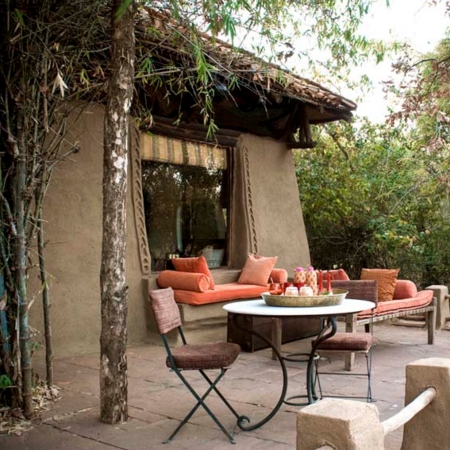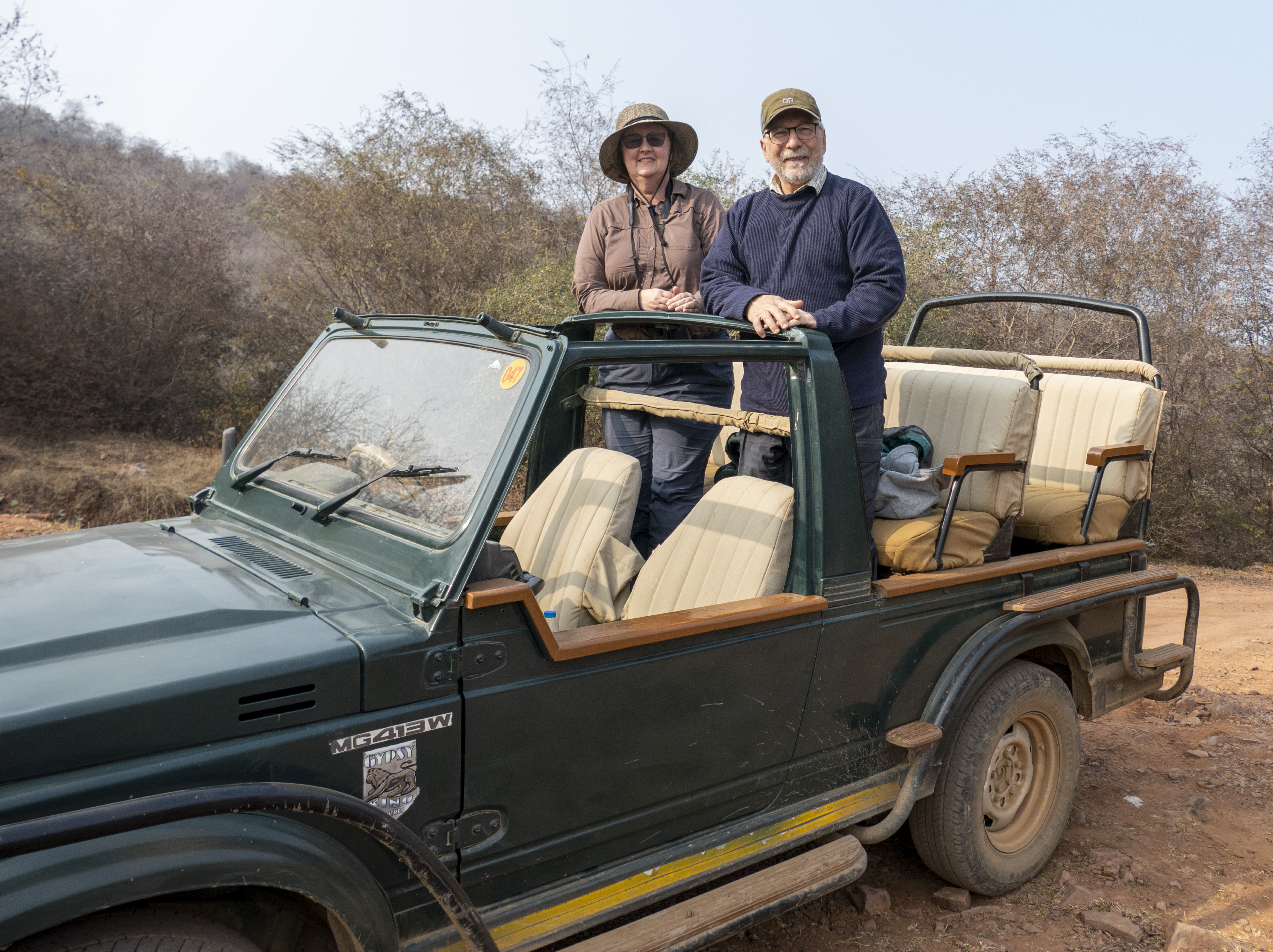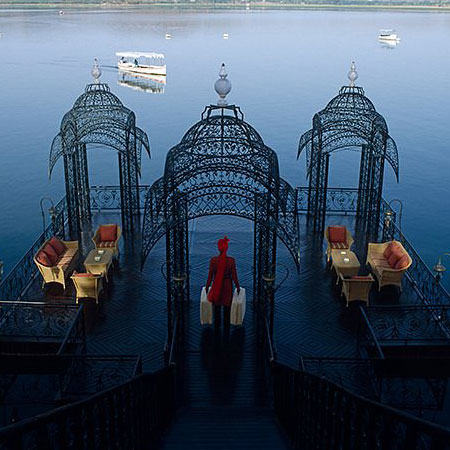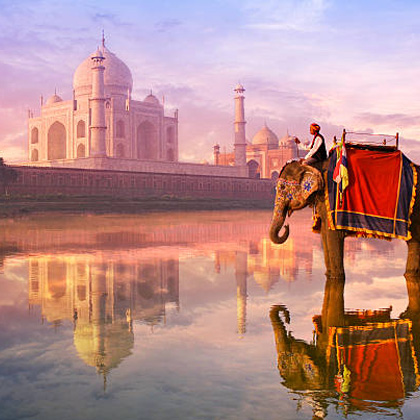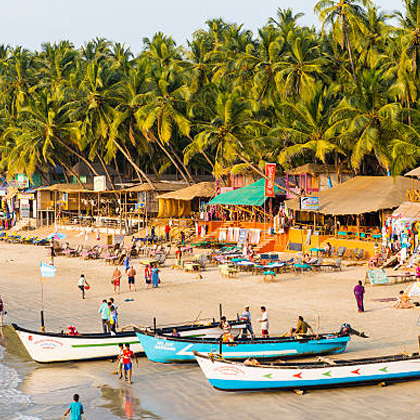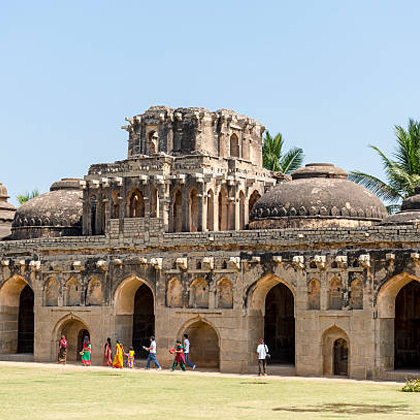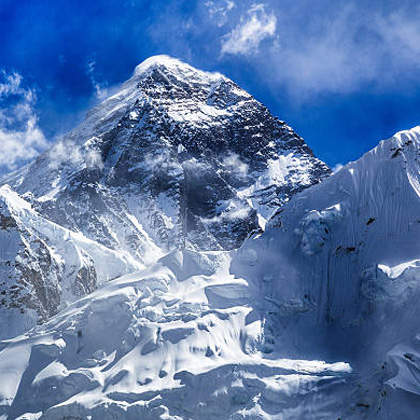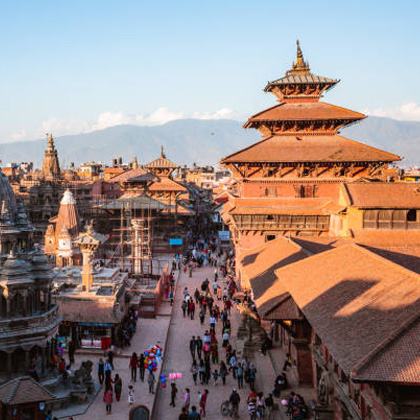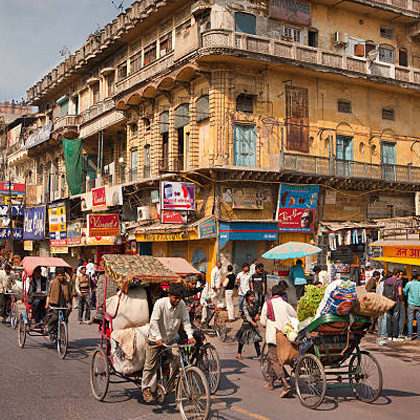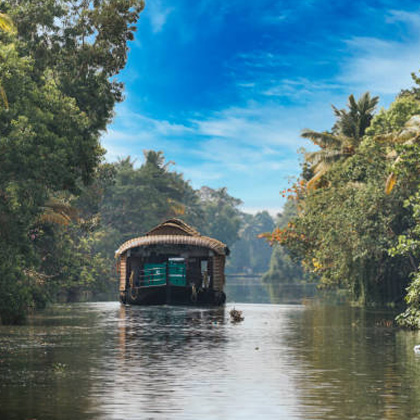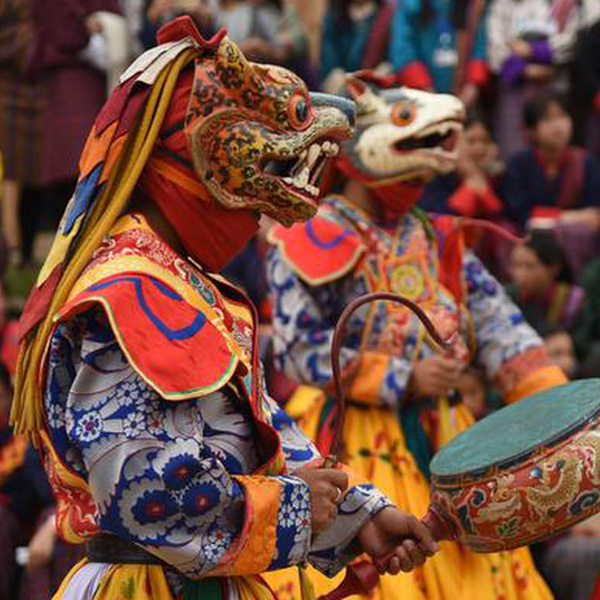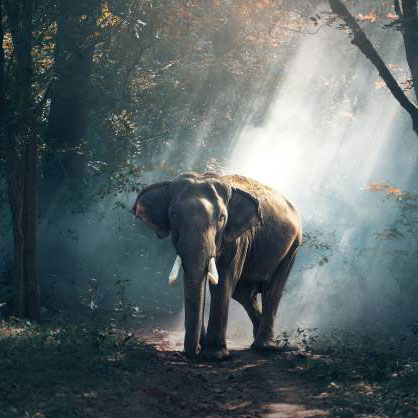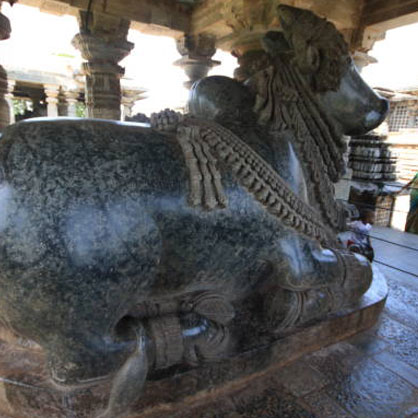A fascinating trip to India by Kathryn & Paul
We had the most amazing time on our trip to India! From the moment we landed, we were captivated by the vibrant culture and rich history of this incredible country. Thanks to Castle and king An Indian Luxury Tours and our private guide, we were able to experience the very best that India has to offer. Our guide was so knowledgeable and passionate about his country, taking us to all the must-see destinations and hidden gems. We explored the bustling streets of Delhi, wandered through the magnificent palaces of Jaipur, and marveled at the timeless beauty of the Taj Mahal in Agra. Every day brought a new adventure,
Day 1: Our first day in India was filled with exciting adventures as we explored the Qutub Minar and the Lotus Temple in New Delhi. The Lotus Temple, which resembles a lotus flower, is a remarkable Bahai temple. We also had the opportunity to visit Humayun’s Tomb, the predecessor to the Taj Mahal. It was fascinating to learn that the Taj Mahal was inspired by this tomb, built by Humayun’s grandson. The complex surrounding the tomb was vast and included the tombs of Humayun’s favorite barber and a nobleman named Isa Khan, who had defeated Humayun in battle before his triumphant return to Delhi. To conclude our day, we embarked on a tour of the Swaminarayan Akshardam, the world’s largest Hindu temple. Constructed over a period of five years and completed in 2005, this magnificent temple is made entirely of pink sandstone and Carerra marble. However, due to strict security measures, we were not allowed to bring cameras or cell phones inside the temple.
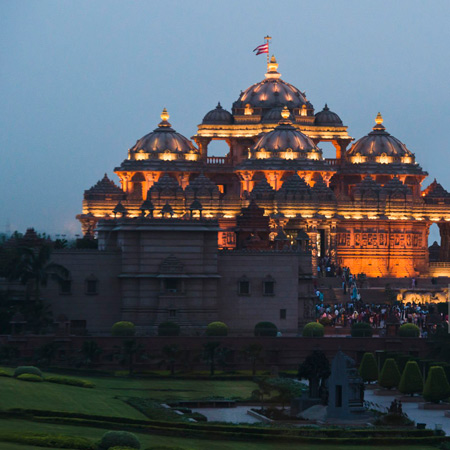
Despite it being a Sunday, we encountered heavy traffic congestion caused by ongoing construction and stalled trucks. As we navigated through the chaotic flow of tuktuks, motorcycles, and street vendors, the air became increasingly smoggy with an Air Quality Index (AQI) of around 450. This high level of pollution made for a challenging journey.
Please note that photographs of the Swaminarayan Akshardam can be found online, as photography was prohibited inside the temple.
Due to the actions of agricultural workers who burn vegetation after their harvest, the resulting smoke has a detrimental effect on the air quality above New Delhi. However, despite this issue, I had the opportunity to enjoy some outstanding cuisine and immerse myself in the complex history and captivating culture of what may soon become the largest country in the world, with a population of 1.4 billion and continuously growing.
During my time in Delhi, I encountered various animals that call this city home. Among them were jackals, cows, stray or feral dogs, parrots, and majestic eagles, possibly the spotted eagle. You can witness the sight of these magnificent birds soaring over the tomb of Isa Khan in the photographs below. (I will include a selection of the many pictures my husband captured in this report.)
For our stay in Delhi, we chose The Metropolitan Hotel, which provided exceptional comfort and amenities.
Day 2: Our second complete day in Delhi comprised a trip to additional sacred locations, including Gurudwara Bangla Sahib, a Sikh temple that provides meals for 5,000 individuals daily.
We had the opportunity to roll some roti (a type of flatbread) that was part of the meal. Although our rotis were not perfectly round like those rolled by the elderly women, we hoped they would taste just as delicious! We began the day with a tour of an Islamic temple, the Jama Masjid, which was constructed in the 1650s by Shah Jahan I, the same individual responsible for building the Taj Mahal. After that, we hopped on a bicycle rickshaw and embarked on a tour of some incredibly narrow and congested streets in Old Delhi. The shops lining the route were exquisitely beautiful, providing a striking contrast to the chaotic atmosphere on the streets, characterized by both the heavy traffic and the entangled power lines that reminded us of Hanoi.
Following that, we paid a visit to Raj Ghat, the site where Mahatma Gandhi was cremated. The park was adorned with quotes by this revered figure and served as a serene place of reverence. Republic Day celebrations were set to commence the following day, making this site the first stop for India’s Prime Minister.
We concluded our day with a visit to a Hindu temple called Laxminarayan Temple, also known as Birla Mandir. This magnificent temple was constructed in the 1930s and is dedicated to the goddess Laxmi. The intricate architecture and intricate carvings showcased the rich heritage and devotion of Hinduism.
Day 3: Our experience in Agra, the city that houses the magnificent Taj Mahal, was truly captivating. Today, we had the opportunity to admire the Taj Mahal from a distance as we explored the Agra Fort, a fortress that left us in awe. The fort’s formidable defenses were truly impressive. A deep moat filled with crocodiles served as the first line of defense. If one managed to overcome this obstacle, soldiers stood guard on the first wall. Beyond them, a treacherous trench housed hungry lions. And if one successfully navigated past the lions, more guards awaited along with a steep ramp where rolling boulders covered in flaming oil posed yet another challenge.
Interestingly, the Taj Mahal’s creator, Shah Jahan, initially established this location as the center of his government. However, it later became his prison when one of his four sons placed him under house arrest here. From this vantage point, Shah Jahan could gaze upon the Taj Mahal in the distance, which he had built as a mausoleum for his beloved wife. Following his passing, he was laid to rest within the grand structure.
Although we had the option to ascend to the fort on an elephant ride, we decided against it. We learned that the elephants are provided with certain protections and only work for a few hours in the morning to avoid excessive heat.
Outside the fort, we encountered a snake charmer. It was interesting to discover that this practice is now deemed illegal due to the removal of the cobra’s fangs, making it safer to handle. However, it is unfortunate that these actions ultimately lead to the snake’s demise.
After visiting the Agra Fort, our journey took us to a remarkable mausoleum called the Baby Taj. This exquisite structure serves as the final resting place of a Persian treasurer who served one of the Mughal rulers. Intricate designs adorned the walls, embellished with jewels meticulously inlaid. However, we were informed that the walls of the Taj Mahal surpass even this impressive display.
Continuing our exploration, we had the opportunity to witness the intricate process of crafting Persian rugs. Although we didn’t have any intention of making a purchase, it proved to be a perfect occasion for capturing stunning photographs.
If you’d like to see the captivating images we captured during our trip, be sure to check them out here:
During our stay in Agra, we were accommodated at the Trident, a charming hotel that offered us a unique experience. To our delight, there was a joyous wedding celebration taking place in the hotel’s courtyard. We discovered that it was “wedding season” in India, as the pleasant weather during this time of year makes it an ideal period for such festivities.
Day 4: The Taj Mahal, arguably the most exquisite edifice on the planet, unquestionably stands as the most stunning structure we have ever laid eyes upon. Our arrival at 6 a.m. granted us the opportunity to witness its ethereal presence as the sun began to ascend, despite the persistent haze and fog obscuring its full radiance. It appeared to hover, adorned with a multitude of precious gems, a profound testament to a man’s boundless love for his departed wife, who tragically passed away while giving birth to their fourteenth child. Continuing our journey to Ranthambore National Park, we made a brief stop to marvel at the awe-inspiring Chand Baori step well. No, we didn’t venture down to sample the algae-covered water hundreds of feet below. However, we did catch sight of a splendid kingfisher, an enchanting avian creature that my husband skillfully captured on film, albeit not in mid-flight, where its beauty truly shines. (Such is the admiration for this bird that it has even inspired the name of India’s finest brew, the Kingfisher brand.)
Day 5: In the poem “The Tyger,” William Blake asks this question:
Tyger Tyger, burning bright,
In the forests of the night;
What immortal hand or eye,
Could frame thy fearful symmetry?
Although we embarked on a morning and afternoon safari at Ranthambore National Park, we were unable to catch sight of any vibrant tigers, despite their luminosity. Nonetheless, we had an enjoyable day. Take a look at the photographs showcasing the various other animals we did encounter, including the majestic nilgai (also known as the blue cow), peacocks, spotted deer, black-faced monkeys, egrets, kingfishers, cormorants, and even a mongoose.
You can view our photo collection here.
During our stay at Ranthambhore, we chose the Ranthambhore Kothi as our accommodation. Although Mr. Arvind recommended a more luxurious hotel, we opted for this more affordable option. Our room was spacious but initially chilly until the electric heater warmed it up, providing us with a comfortable environment. We did encounter some issues with certain light switches that appeared to be non-functional, and we noticed that pigeons took pleasure in perching on our balcony. We were informed that hot water was only available during specific hours, but this did not inconvenience us as it was accessible when we desired to take showers. Additionally, the hotel provided us with thick blankets to ensure our warmth during the nights.
As we wrap up our adventures in Ranthambore, we reflect on the captivating wildlife we were fortunate enough to witness. Although the elusive tigers remained unseen, the diverse array of creatures we encountered made our experience truly remarkable.
Day 6: Alright. The third attempt proved to be successful! We finally had the chance to witness a wild tiger, a magnificent and sizable female. Despite almost losing hope, we turned a corner and there she was, right before our eyes! After a brief period of time, she started moving away from us, prompting the convoy of jeeps we were part of to travel downhill, hoping she would make her way there. Although she took her time, she eventually ended up right in front of our jeep, on her journey towards a nearby lake. She affectionately rubbed her head against a tree and settled down for a well-deserved rest from all the attention.
By the way, the morning safaris were quite chilly; I would venture to guess that it was just above freezing, especially when driving swiftly in an open jeep amidst the morning fog. We couldn’t help but wish we had brought warmer attire.
During our expedition, we also encountered various species of birds, monkeys, a few crocodiles, and even fruit bats. Feel free to peruse the photos if you’re interested.
Subsequently, we embarked on a four-hour drive to Jaipur, the capital of Rajasthan. The ancient part of the city is renowned for its buildings adorned in pink hues, hence its nickname “the pink city.”
Our accommodation in Jaipur was The Samode Haveli, a former residence of a local ruler. It was truly exquisite and ranks among the most remarkable places we have ever had the privilege of staying in.
Day 7
Today’s itinerary included a visit to the Amber Fort Palace, which served as the residence for the Hindu rajahs until it became too small for their needs. Subsequently, they constructed the City Palace in the heart of Jaipur. The rajah faced occasional challenges in managing his 16 wives. When his first wife went away, the others expressed a desire for her more spacious and opulent quarters. To settle the matter, the rajah devised a strategy involving a game of chess, which originated in India. The wives would compete against each other, and the winner would be granted the queen’s quarters until her return.
Furthermore, we explored the Jantar Mantar, an architectural marvel that housed various instruments used to determine time, latitude, and astrological signs. En route to our destination, we caught a glimpse of a royal procession that showcased the regal splendor of the rajah’s court.
Day 8: Yesterday, I neglected to mention that on Day 7, we drove to the residence of an Indian family for a cooking class. During the class, we prepared a variety of dishes. I couldn’t help but chuckle when our teacher criticized my husband’s technique of spooning the mixture of vegetables and chickpea flour into the pot of boiling oil. We had the opportunity to meet the family’s two daughters, one aged 9 years and the other only 9 months old. Later, the husband returned home from his job at the royal palace, where he works on special events like weddings and visits from important guests. They graciously shared photos from their wedding album and enlightened us about the customs and daily life in India. It was truly one of the highlights of our trip so far, as their genuine hospitality made us feel like honored guests ourselves.
During the night, we were awakened by heavy rain, which continued throughout most of the day. Nevertheless, we braved the rain to capture a photo of the magnificent Wind Palace, known for its impressive 900 windows. Afterwards, we embarked on a walking tour of the city, passing by various storefronts selling an array of items such as spices, chili peppers, chai, and fresh produce – all essentials for everyday life. Interestingly, we came across two barbers offering haircuts right on the sidewalk for a mere 100 rupees (approximately $1.20).
After our stroll, we drove to a location that showcased the art of block printing – a technique that utilizes large wooden blocks adorned with intricate designs. In order to create an image of an elephant, several blocks are sequentially dipped into plant-based dyes and pressed onto a sheet of cotton, layer by layer. The colors undergo a transformation as they dry and oxidize. My spouse was so captivated by the process that he decided to have two shirts custom-made. These shirts were tailored specifically for him and were promptly delivered to our hotel a few hours later. The end result was truly magnificent. He justified his need for them by attributing it to his expanding waistline, courtesy of the irresistibly delectable cuisine here.
We then made our way to Dera Amer, located just outside the city, where a remarkable young man had transformed a portion of his family’s farm into a sanctuary for one camel and two elephants. These animals had been rescued from the arduous task of transporting people up to the Amber Fort Palace. Although the government imposes regulations on such activities, including limiting the number of trips elephants can make per day and specifying working hours, the conditions are not ideal for these majestic creatures. Here on the farm, guests have the opportunity to walk alongside the elephants instead of riding on their backs. We were informed that the caretaker, who rides atop one of the elephants, serves to provide a sense of safety and security for the animal. It is evident that this family is deeply committed to preserving and caring for these animals.
Day 9
Today, we took a flight from Jaipur to Udaipur, both of which are situated in the state of Rajasthan. Rajasthan is known for its resistance against the Moghal attacks from the north. Interestingly, the leader of Udaipur holds the title of Maharana, distinguishing him as a warrior king rather than a maharaja. Udaipur is often referred to as the Venice of the East due to its interconnected man-made lakes, which were initially created for irrigation purposes and to provide drinking water to the town. The city’s breathtaking beauty has also made it a popular destination for weddings.
During our visit, we were able to explore the wild side of Udaipur. As we were returning to our hotel after a leisurely walk by the nearby lake, we caught sight of a peacock perched above a door. Peacocks are India’s national bird, and we have encountered them in various places throughout our journey. On our way to a Hindu shrine, we even had the surprise of spotting a crocodile. Our guide, who was born and raised in Udaipur, was taken aback by this sighting. “I swam here just a few days ago,” he confessed. “I always thought the stories about crocodiles were just myths!” I doubt he will be taking another swim anytime soon. At the oldest Hindu shrine in Udaipur, known as the Jagdish Temple, we witnessed monkeys leaping around the 17th-century structure, reminiscent of a scene from “The Raiders of the Lost Ark.”
During our visit to Udaipur, we had the opportunity to witness the vibrant atmosphere that earned it the nickname “Venice of the East.” Pigeons were a common sight, and it was fascinating to see them take flight whenever a curious toddler attempted to chase after them. Our guide mentioned that pigeons hold a special significance in India, although the exact reason escapes my memory. In this land, cows are considered holy due to their role in providing milk and are regarded as a manifestation of the mother goddess. I was surprised to learn that most cows are owned by individuals who sell their milk. Despite the freedom to roam the cities, these cows return home to be milked. Even stray cows receive care from various organizations. Interestingly, although there are a few Burger King establishments, they do not serve beef burgers.
Another place we visited was Sahelion Ki Bari, also known as the Garden of the Maidens. It served as a refuge for the queen and the women accompanying her, offering them an escape from the confines of the palace and a chance to immerse themselves in nature’s beauty. The garden boasted fountains and provided a refreshing ambiance. It was a reminder that even queens led sheltered lives, seldom venturing beyond the palace walls and only able to catch glimpses of the outside world through screens.
Day 10:
During our visit to Udaipur, we embarked on a delightful boat journey across Lake Pichola, where we had the chance to admire the iconic Taj Lake Palace. This luxurious hotel has gained fame for its appearance in the James Bond film, Octopussy, starring Roger Moore. As we continued our boat ride, we made a stop at an island with a fascinating history. It was once a hiding place for Shah Jahan, the future builder of the Taj Mahal, who sought refuge from his father. The local king graciously offered him sanctuary on the island, cleverly deceiving Shah Jahan’s father by claiming that it was a sacred shrine reserved solely for women’s worship. Today, this island is known as Jag Mandir, meaning Hindu temple, despite the absence of any actual temple or shrine.
Exploring further, we visited the grand City Palace, adorned with intricate mosaics and silver embellishments. Among the many rooms within the palace, one in particular caught my attention. It belonged to a king who had suffered from polio during his childhood. His room was thoughtfully designed to accommodate his needs, featuring a wheelchair and even a nearby elevator.
In the evening, we were treated to a mesmerizing show that showcased the vibrant local culture. The performance included traditional dances, captivating music, and enchanting puppetry. It was a truly immersive experience that left us in awe of Udaipur’s rich artistic heritage.
As our day came to an end, we found ourselves staying at the exquisite Trident Hotel in Udaipur. This stunning property boasts beautiful grounds and provides a truly luxurious experience for its guests.
On Days 11 and 12 of our journey, we embarked on a long journey from Udaipur to Delhi and finally arrived in Varanasi, which holds the distinction of being the oldest continually inhabited city in the world.
Our initial encounter with Varanasi was during our drive from the airport to our hotel. We had thought that traffic in Delhi was bad, but Varanasi proved to be on a whole different level. It exceeded any other place we had been in India in terms of its chaotic and congested streets. If you want to get a glimpse of what it’s like to navigate through a street where cars, bikes, rickshaws, tuk-tuks, pedestrians, cattle, and dogs are all vying for space, take a look at this video (not mine) that perfectly captures the experience.
However, the challenge didn’t end with the conclusion of our car ride. As we ventured into the narrow alleys, we found ourselves accompanied by motorbikes whizzing past us, while we skillfully avoided sleeping dogs and persistent beggars. It was in those moments that we truly felt like we had discovered the vibrant and frenzied India that had been described to us.
After settling in, we eagerly made our way to the banks of the Ganges River to witness a nightly ceremony on one of the ghats – platforms situated at the bottom of stairs leading down to the river. These ghats serve as gathering places for locals who come to bathe, pray, perform cremations for their deceased loved ones, and scatter ashes into the holy waters of the Ganges.
During our visit to Varanasi, we had the pleasure of befriending three young women who had come to the city to pursue their master’s degrees at the local university. They were incredibly kind and graciously offered to accompany us on a trip to buy some local sweets after the ceremony.
The following morning, we met up with our guide bright and early at 6 a.m. We embarked on a delightful journey, a combination of driving and walking, to the same area we had visited before. However, this time we decided to take a boat ride along the tranquil waters of the Ganges. As the sun began to rise over the eastern shore, we were greeted with both a chill in the air and the breathtaking beauty of the surroundings. Along our route, we encountered individuals immersing themselves in the holy waters and witnessed two crematoriums diligently carrying out their solemn tasks of cremating the deceased.
on, our itinerary led us to a silk weaving store and then to Sarnath – one of the four sacred places for Buddhists. It was here that Buddha delivered his first sermon and where Buddhist monks received their initial training. Although the site had suffered significant damage from Muslim invaders in the 1200s, there are still remnants of the original brick foundations. The grand stupa stands tall as a memorial, commemorating the historic location of the momentous sermon.
Our accommodations during our stay in Varanasi were at the Suryaudai Haveli. Originally constructed as a retreat for elderly members of a Nepali royal family, it provided us with a comfortable and serene environment.
Our accommodation featured a petite window that provided a picturesque view of the flowing Ganges River. We relished the serene ambiance of the hotel, as well as the melodious tunes played by musicians during dinner time in the courtyard. It came to our knowledge that not only our hotel, but all the other establishments along the riverbank exclusively served vegetarian cuisine. However, we were pleasantly surprised by the abundance of options available. Among the highlights of our stay was the hotel’s rooftop terrace, which afforded us a magnificent panorama of the Ganges. Initially, we were curious about the presence of a staff member wielding a sizable stick on the rooftop, but it didn’t take long for us to understand his purpose when a group of mischievous monkeys attempted to join us.
On Day 13 and 14 of our journey, we took a flight from Varanasi to Mumbai and embarked on a whirlwind car tour of the city. Mumbai, the second largest city in India (after Delhi), is home to a staggering 20-30 million people, depending on whether you include the metro area. Despite its size, Mumbai stands out as the most modern city we have encountered thus far in our travels across the country. One notable difference is the absence of tuk tuks on the roads; instead, small cabs dominate the streets. Furthermore, the government enforces strict regulations against excessive honking, imposing fines on erring drivers. Additionally, there is some semblance of order with regards to street lanes, and while there are still a few cows roaming amidst the traffic, their numbers are significantly fewer compared to other cities.
However, Mumbai is not without its share of slums, which are plentiful throughout the city. We made our first stop at Dhobi Ghat, an expansive area where a staggering 7,000 individuals hand wash tons of laundry each day. This includes not only newly made clothing but also hotel bed sheets, all prepared for sale. It was a mesmerizing sight to witness this massive operation taking place amidst the backdrop of modern apartment buildings towering above.
Following our visit to Dhobi Ghat, we proceeded to tour a train station that showcased a unique blend of architectural styles. The station’s design featured elements of Gothic, Arab, and Indian influences. Originally named after Queen Victoria, the Indian government later changed its name as a tribute to a revolutionary who fought against the Mughal empire.
Overall, our time in Mumbai provided us with a glimpse into the city’s modernity, juxtaposed with remnants of its past. It was an experience that left us both intrigued and fascinated by this vibrant metropolis.
During our trip to Mumbai, we had the opportunity to visit the house where Gandhi resided. It was fascinating to see the photo of the room, which had a simple mattress placed on the floor. Interestingly, Martin Luther King, Jr. and his wife also spent a night in that very room. This experience deeply impacted King, leading him to embrace Gandhi’s principles of nonviolent civil disobedience in his fight for Civil Rights in the United States.
Once we arrived at our hotel, the luxurious Trident, we discovered that it had been one of the targets of a terrorist attack carried out by Pakistani militants a few years ago. Shockingly, this attack claimed the lives of 30 individuals. However, we were relieved to learn that security measures had been significantly reinforced across hotels in India since then, alleviating any concerns we may have had.
The following day, we embarked on an hour-long boat ride to Elephanta Caves, located on an island. These caves were adorned with statues depicting Shiva, one of the prominent deities in Hinduism. Our guide was exceptional – a grandmother who provided us with insightful explanations about Hinduism and its values. She also shared that her children opted for love marriages rather than arranged marriages, giving us a deeper understanding of the diverse practices within Hindu culture.
Later that afternoon, we boarded a flight to Aurangabad to commence our exploration of two additional caves. These caves showcased ancient paintings and sculptures dating back to the second century BC, allowing us to immerse ourselves in the rich history and artistry of the region.
On Day 15, we explored the Ajanta Caves, followed by a visit to the Ellora Caves on Day 16.
These caves are truly awe-inspiring, although they are not technically caves in the traditional sense. Picture a mountain composed of basalt, a hard rock formed from lava after a volcanic eruption. Now envision skilled craftsmen meticulously carving a clay model of a temple, complete with intricate interior chambers and detailed bas-relief artwork. These craftsmen labored tirelessly for hundreds of years, using hammers and chisels to create masterpieces that were all crafted directly into the rock.
During our tour of the Ajanta Caves, which were the first caves we visited, we learned that Buddhist monks played a significant role in their creation. The monks not only carved the rock but also plastered and painted it with vivid images of Buddha and the stories associated with him. This incredible work began around 200 BC and was ultimately abandoned by 700 AD. It is estimated that approximately 1,000 monks resided in these caves, dedicating their lives to both living and working within these sacred spaces. Young novices would gather here to study the teachings of Buddha, absorbing the wisdom passed down by their elder counterparts through recitations of the stories depicted on the cave walls and ceilings. One particularly striking carving we encountered was that of a reclining Buddha, representing the peaceful state of his passing and ranking as the second largest in the world.
The Ellora Caves, which we explored on Day 16, presented an equally captivating experience. These caves showcase an extraordinary fusion of religious faiths, with Hindu, Buddhist, and Jain temples coexisting harmoniously within the same complex. Each cave is a testament to the devotion and skill of its creators, with ornate sculptures and intricate carvings adorning the walls. One remarkable feature of the Ellora Caves is the Kailasa Temple, an architectural marvel carved entirely from a single rock, showcasing the remarkable craftsmanship of ancient artisans.
Visiting these caves was an unforgettable journey into the past, allowing us to witness the incredible artistry and dedication that went into their creation. It was a humbling experience to stand amidst these ancient works of art and contemplate the rich histories they hold.
After the site was abandoned, rocks fell and covered all of the caves. Then, in the early 1800s, British troops stumbled upon them while in pursuit of a tiger (apparently, the tiger survived). Due to their hidden existence for centuries, the artwork within the caves remained remarkably preserved compared to that of the Ellora Caves, which were always known to locals. In fact, some individuals even took to hacking away at the carvings in Ellora as souvenirs, including sections of the massive elephant trunks.
The Ellora Caves were first initiated in 700 AD and construction continued for 400 years until they were ultimately abandoned. What sets the Ajanta and Ellora Caves apart is that the former exclusively focused on Buddhist art, while the latter incorporated ideas and styles from Hindu, Buddhist, and Jain followers. It’s worth noting that Jains make up less than half a percent of the Indian population. Furthermore, one of their two sects refrains from wearing clothes and both avoid consuming meat, fish, and root vegetables. Even Buddha considered their practices extreme!
The first Ellora site we encountered was truly immense. Approximately 1 million tons of rock were excavated to create it, and many of its intricately carved sculptures are featured on Indian currency. Both the Ajanta Caves and Ellora Caves have been recognized as UNESCO World Heritage sites. It is also a UNESCO World Heritage site as are the Ajanta Caves.
At the conclusion of the day, we arrived back in Mumbai and made preparations for our journey back home. To our astonishment and joy, the Trident hotel graciously upgraded us to a luxurious suite overlooking the magnificent Arabian Sea. We dined at their relaxed restaurant and were treated to exceptional service (along with a complimentary dessert!) by their friendly team. It was regrettable that we didn’t have sufficient time to fully explore the wonders of Mumbai, as it is undeniably a stunning city. We can only remain hopeful that there will be another opportunity in the future to delve deeper into the captivating charms of India.

 Menu
Menu